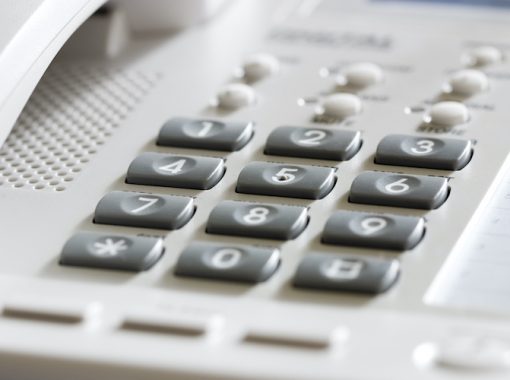As a business owner or manager, it is your responsibility to track the success or failure of your marketing campaigns. With endless online marketing tools available, tracking online leads and conversions is a breeze.
But what about leads that call for more information? Or those that convert over the phone after several touchpoints?
All too often, marketing teams fail to truly track all the leads generated by their efforts. And, in some cases, this can lead to wildly untrue campaign results.
Fortunately, call tracking is the perfect way to combat this problem.
Yet, even with this powerful tool at their fingertips, some marketing teams still fail to use call tracking properly. That’s why we’re here to show you the best ways to optimize your call tracking strategy, along with what not to do.
Let’s dive in.
What Is Call Tracking & What Will It Help Me With?
Call tracking is the process of using a specific toll-free or vanity number to determine from where incoming phone leads came.
For example, imagine an insurance company participates in a local event, passing out flyers and other sales materials to those walking by their booth. If they used a call tracking number, they will know exactly which phone leads came from the local event because the only place the call tracking number was used was on those marketing materials.
Without a call tracking number in place, these phone leads would have gone into the larger funnel of potential clients. This practice can severely diminish the chances of these leads converting, as the following sales conversations won’t be tailored to the knowledge that the caller attended the event.
Marketing teams use call tracking phone numbers to track phone leads from all types of promotional efforts, including:
- Radio & TV ads
- Print materials
- Social media advertising campaigns
- Local SEO strategies
- Sales landing pages
In addition to significant tracking capabilities, call tracking numbers also help by providing benefits such as:
- Measuring ROI – Failing to factor in phone leads from a particular campaign or tactic can drastically alter the results. If a PPC ad generates one online lead, it can be considered a failure. But, if that same PPC ad also generated twenty phone calls, it’s a success! Call tracking numbers aid marketing teams in accurately calculating the return on investment of their efforts.
- Identifying Prime Marketing Channels – Using the logic behind accurately measuring ROI, call tracking numbers also help marketers identify which marketing channels drive the most results. Without including phone lead data, these results may be significantly altered.
- Budget Allocation – With all this in mind, marketers now have enough lead data to properly allocate funds to the marketing channels that drive the most results — all thanks to their call tracking number!
Additionally, many companies are using call tracking features to improve their customer service processes. Call tracking also offers call intelligence tools like call notes and call recording, allowing employees to review previous customer conversations and pinpoint opportunities for improvement or where the company can better serve the customer.
Clearly, adopting a toll-free number with call tracking and call intelligence capabilities is an advantageous route for companies of all sizes.
The Worst Ways to Use Call Tracking
However, just because you have a call tracking phone number doesn’t mean you’re using it properly. Many first-time users make a few rookie mistakes, some of which could be costly.
Let’s review how not to use call tracking.
Using the Same Toll-Free Number for Multiple Campaigns or Marketing Channels
Call tracking works best when each marketing channel or campaign has a unique toll-free number.
Why?
To avoid this situation …
Let’s say a marketing agency is running a campaign to increase leads for their SEO services. They create a landing page targeting a specific keyword and encourage visitors to submit a form or give them a call using the call-tracking number listed.
At the same time, they’re running a social media advertising strategy to garner leads for their new video marketing. And, you guessed it, they used the same call-tracking number on the ads.
So, when leads call the agency using this single tracking number, how are they supposed to report the leads or attribute them to a specific effort?
Sure, you can manually track, but this opens up the door to human error and a whole other world of potentially costly mistakes.
Instead, assign a call tracking number to each marketing campaign, strategy, or tactic for the most accurate results.
Or, if you only want to purchase one call tracking number, make sure the campaigns it is used in do not overlap.
Using Call Tracking Numbers Where It Damages NAP
In the SEO world, there is a concept known as NAP. This stands for Name, Address, Phone Number.
To help potential customers searching for your company’s information or related services near them, your business’s NAP must remain constant across platforms.
As a result, if you use call tracking numbers on third-party listing sites such as Yelp, Facebook, or even Google Business listings, it can cause a negative impact.
With this in mind, you must be strategic about using a call tracking number when it comes to any SEO campaign.
Options like Dynamic Number Insertion tools are available for campaigns leveraging webpages but are not typically offered on third-party listing sites or profiles.
Only Using Call Tracking Numbers for Offline Marketing
Call tracking numbers are commonly used to track the success of offline marketing efforts like print materials or outdoor advertising.
But that’s not all they can track … don’t make the mistake of only using call tracking for your offline efforts.
People look for phone numbers online, too. Use call tracking to measure everything from email marketing campaigns to YouTube videos and beyond.
The potential is practically limitless!
5 Great Ways to Use Call Tracking
Now that you know what not to do with your call tracking number, let’s explore all that you can do.
1. Pay-Per-Click Ads
By including a toll-free call tracking number in your PPC copy, you actively increase your chances of a user converting into a lead.
Since most people want to connect with a salesperson or have their questions answered before making a purchase, including a toll-free number to call improves their trust in your brand.
Plus, with Dynamic Number Insertion, you can also tailor your call-tracking numbers to match the user’s geographic location. This increases your chances of a qualified lead that much more!
2. Social Media Ads
The social media advertising space is incredibly saturated. Everyone, from major corporations to local companies, leverages ads on Facebook, Instagram, and even TikTok to garner brand awareness and drive sales.
Companies looking to build a trusting relationship with customers on a local level fare well by including a call tracking number in their ads.
By including a phone number, you tell potential customers that they can call anytime and have their questions answered and their concerns taken care of.
Plus, it helps with calculating the overall success of your social media ad campaign.
3. Landing Pages
The same concept applies to your landing pages. Whether you’re trying to draw in new customers for a particular service or promote a webinar, having a phone number to call helps increase your chance of a conversion.
And, when you do receive a conversion, you’ll know exactly which landing page or marketing campaign the phone lead came from. You’ll never need to worry about lead confusion or proper attribution again.
4. CRM Integration
If you’re not integrating your call tracking system with your Customer Relationship Management software, you’re not using your call tracking number to its fullest potential.
The best results come from seamlessly integrating your call tracking data into your CRM. Doing so helps all employees understand:
- What needs the customer has
- The context of previous conversations
- Demographic & geographic data as it relates to the sale
- Which campaign or strategy generated the lead
- How many times the lead has called
- Which sales or customer service reps have handled the calls
- How long each call was
And so on.
There’s no shortage of information when your call tracking numbers are connected to your CRM. You’ll have everything you need to develop a strong and lasting relationship with leads and ultimately close the sale.
5. Call Tracking for Events
Several industries use events, both online and in-person, to generate leads for their business.
If you’re using events such as webinars, classes, and conferences to bring in more qualified prospective customers, a call tracking number is a necessity.
When attendees call that number, they are automatically grouped into your event leads. Without a tracking number, these individuals would be sorted with the generic phone leads, meaning your sales team is missing out on yet another opportunity to connect with the lead.
Always make sure each event, class, or in-person opportunity you host has a designated call tracking number for the best results.
Get Your Call Tracking Number Today
Now that you know the best ways to use a toll-free number with call tracking capabilities, what are you waiting for? Claim yours now!












